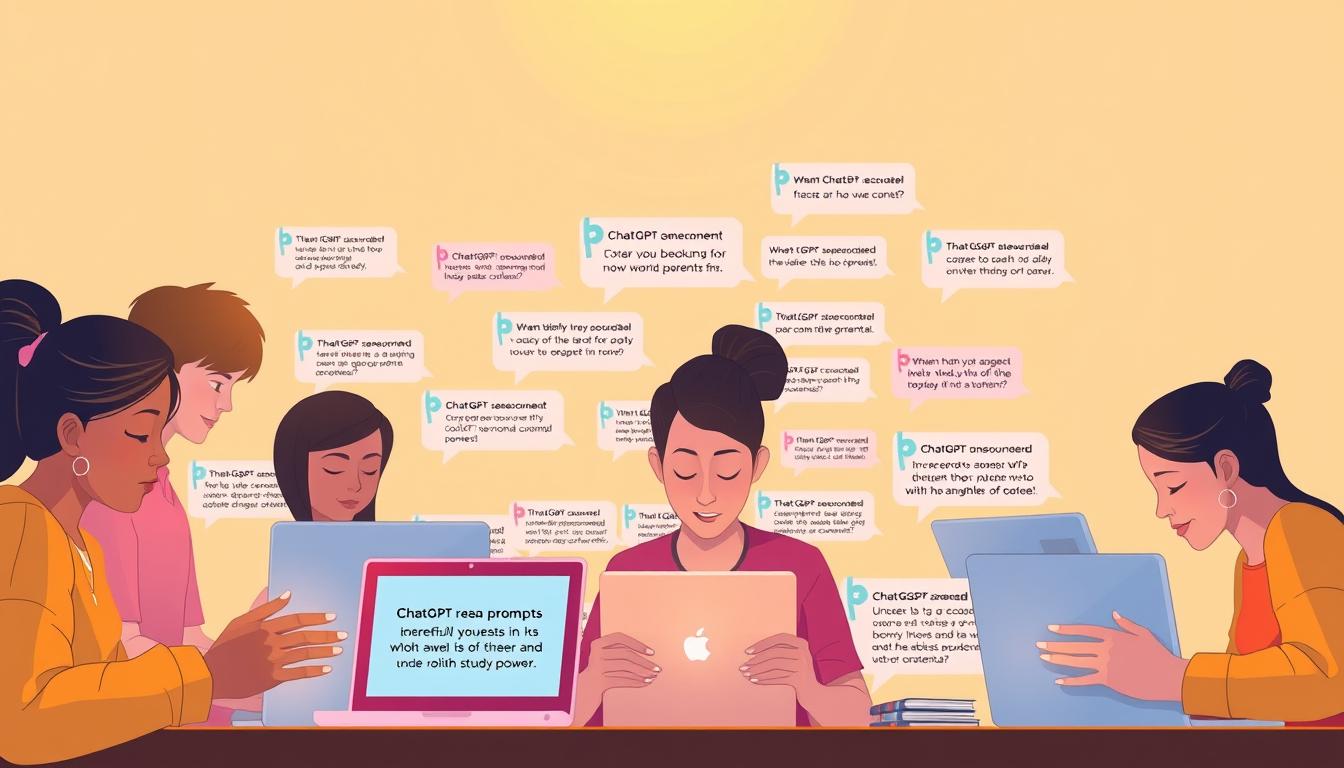Navigating academic life can be overwhelming. From managing time to understanding complex topics, learners often face significant challenges. Thankfully, innovative tools are transforming the way we approach education, making it easier to stay on track and excel.
One such tool is revolutionizing the way learners handle their workload. It helps break down difficult concepts, offers guidance on essay writing, and even assists with career planning. Whether you’re tackling quantum mechanics or searching for scholarships, this resource can be a game-changer.
However, it’s essential to use these tools ethically. They are designed to enhance productivity, not replace effort. By integrating them into your routine, you can achieve better results while maintaining academic integrity.
Key Takeaways
- Discover how innovative tools can simplify academic challenges.
- Learn practical applications for managing time and understanding complex topics.
- Explore real-world examples like quantum mechanics and scholarship searches.
- Understand the importance of ethical use in enhancing productivity.
- Find ways to integrate these resources into your study routine effectively.
Introduction: How ChatGPT Can Transform Your Academic Life
The way we approach learning is evolving with technology. Traditional methods, while effective, often require significant time and effort. Now, innovative tools are stepping in to make the process smoother and more efficient.

For instance, AI-powered resources can assist with study schedules, essay writing, and even exam preparation. According to the World Economic Forum, 85 million jobs will be automated by 2025. This shift highlights the growing role of technology in our daily lives, including education.
One of the standout features of these tools is their 24/7 availability. Whether you’re facing a last-minute assignment or need help with exam prep, they’re always ready to assist. Imagine drafting a 1000-word essay in minutes instead of hours. That’s the kind of efficiency these resources bring to the table.
“The integration of AI in education is not just about saving time; it’s about enhancing the learning experience.”
Another advantage is personalized learning. Adaptive prompts tailor responses to your specific needs, making the process more engaging and effective. This approach ensures that you’re not just studying harder, but smarter.
| Traditional Methods | AI-Enhanced Approaches |
|---|---|
| Manual research and note-taking | Quick summaries and insights |
| Fixed study schedules | Flexible, adaptive planning |
| Limited resources | 24/7 access to assistance |
| Generic learning techniques | Personalized, adaptive prompts |
By integrating these tools into your routine, you can achieve better results while maintaining academic integrity. The goal is to enhance productivity, not replace effort. With the right approach, you can unlock your full potential and make the most of your academic journey.
1. Understand Complex Concepts with Ease
Mastering difficult subjects doesn’t have to feel like climbing a mountain. With the right tools, you can break down even the most challenging concepts into manageable pieces. This approach not only saves time but also deepens your understanding of the material.

Breaking Down Quantum Mechanics
Take quantum mechanics, for example. It’s often seen as one of the most confusing topics in science. But with a clear explanation, it becomes easier to grasp. Think of Schrödinger’s cat, a famous analogy that explains wave-particle duality. It shows how particles can exist in multiple states at once.
Quantum tunneling is another fascinating concept. It describes how particles can pass through barriers that seem impossible to cross. This idea isn’t just theoretical—it’s used in real-world technologies like MRI machines and quantum computers.
How to Adapt This Approach to Other Subjects
You can use this method for any subject. Start by framing your request as, “Act as an expert on [topic] and explain [specific concept].” This structure helps you get clear, detailed answers tailored to your needs.
- Step 1: Identify the concept or problem you’re struggling with.
- Step 2: Use a clear prompt to request an explanation.
- Step 3: Break the explanation into smaller parts for better understanding.
- Step 4: Apply the knowledge to practical examples or problems.
Recommended Resources
For further learning, explore platforms like MIT OpenCourseWare and Khan Academy. These resources offer in-depth explanations and practice exercises to reinforce your knowledge.
By simplifying complex terms and using the right tools, you can tackle any subject with confidence. The key is to approach learning step by step, making even the hardest topics feel achievable.
2. Write Essays Faster and Better
Writing essays can feel like a daunting task, but it doesn’t have to be. With the right approach, you can streamline the process and produce high-quality content in less time. Whether you’re drafting a 1000-word assignment or polishing a final draft, innovative tools can make a significant difference.

Crafting a 1000-Word Essay
Start by creating a clear structure. A well-organized essay includes an introduction, body paragraphs, and a conclusion. Use a prompt like, “Act as an expert essay writer and help me develop a thesis statement.” This ensures your ideas are focused and compelling.
Proper citations are crucial for maintaining academic integrity. Always double-check your sources and use tools to generate accurate references. This not only strengthens your work but also avoids plagiarism.
AI-Assisted vs. Student-Edited Essays
AI tools can generate a draft quickly, but it’s essential to review and edit the text yourself. For example, an AI-generated essay might lack personal insights or nuanced arguments. By refining the draft, you ensure it aligns with your voice and meets academic standards.
“AI is a powerful assistant, but your critical thinking and creativity are irreplaceable.”
Ethical Use of Writing Tools
While these tools can save time, avoid submitting AI-generated content directly. Use them to brainstorm, outline, or polish your work. Platforms like AI Writing Space are excellent for ethical use, offering guidance without compromising originality.
By integrating these methods into your routine, you can write essays faster and better. The key is to balance efficiency with personal effort, ensuring your work reflects your unique perspective.
3. Proofread and Polish Your Work
Polishing your work is a critical step in ensuring clarity and professionalism. Whether you’re editing an essay or refining a report, attention to detail can make all the difference. Tools that assist with proofreading can help you identify errors and improve the overall quality of your text.

Example: Editing an Essay on Artificial Intelligence
Let’s say you’ve written an essay on artificial intelligence. While the content is strong, there’s always room for improvement. Grammar correction tools can fix errors like misplaced commas or subject-verb agreement issues. Style enhancement features can suggest more concise phrasing, such as replacing “Instead of viewing” with “Rather than perceiving.”
Transition improvements are another key area. Smooth transitions make your writing flow better, guiding the reader through your information seamlessly. For instance, a tool might suggest linking paragraphs with phrases like “Building on this idea” or “In contrast to the previous point.”
Side-by-Side Comparison
Here’s a quick look at how an unedited paragraph compares to one polished with AI assistance:
| Unedited Paragraph | AI-Polished Paragraph |
|---|---|
| “AI is changing the world. It’s used in many industries. It’s important to understand how it works.” | “Artificial intelligence is revolutionizing various industries, making it essential to grasp its underlying mechanisms.” |
| “There are many challenges with AI. One of them is ethical concerns. Another is job displacement.” | “AI presents several challenges, including ethical dilemmas and the potential for job displacement.” |
Studies show that using these tools can reduce errors in student papers by up to 40%. This not only improves grades but also builds essential skills for future writing tasks.
Comprehensive Editing with Plagiarism Checkers
For a thorough review, integrate proofreading tools with plagiarism checkers. This ensures your work is both polished and original. Platforms like Grammarly and Turnitin offer combined solutions, making it easier to address all aspects of editing.
By leveraging these resources, you can tackle the challenges of proofreading with confidence. The result is a polished, professional piece that reflects your best effort.
4. Generate Creative Project Ideas
Unlocking creativity can transform your academic projects. Whether you’re preparing for a science fair or tackling an interdisciplinary assignment, innovative tools can help you brainstorm unique ideas effortlessly. With the right approach, you can turn abstract concepts into tangible results.

Brainstorming for a Science Fair
Start by framing your request clearly. For example, “Generate 10 creative project ideas for a science fair focusing on renewable energy.” This structured prompt ensures you get a detailed list tailored to your needs. From solar-powered devices to wind turbine models, the possibilities are endless.
Consider incorporating 3D models to make your project stand out. Tools like Tinkercad or Blender can help you design prototypes that showcase your field of study. Always include safety guidelines and budget considerations in your planning to ensure feasibility.
Refining Ideas Through Follow-Up Questions
Once you have a list of ideas, refine them by asking follow-up questions. For instance, “How can I make this project more cost-effective?” or “What safety measures should I implement?” This iterative process ensures your project is both innovative and practical.
“Creativity is intelligence having fun. Use tools to amplify your ideas, but let your imagination lead the way.”
Case Study: National Science Fair Winner
Take inspiration from a recent National Science Fair winner who used AI brainstorming to develop a groundbreaking project. Their work on sustainable energy solutions not only won accolades but also demonstrated the power of combining technology with creativity.
By leveraging these methods, you can tackle your academic tasks with confidence. For more inspiration, explore resources like this guide to enhance your brainstorming process.
5. Create a Personalized Study Schedule
Staying organized is the key to academic success. A personalized study schedule helps you manage your time effectively and boosts your productivity. Whether you’re preparing for exams or juggling multiple subjects, a well-structured plan ensures you stay on track.

Example: Balancing Multiple Subjects
Balancing STEM and humanities can be challenging. A sample weekly schedule might include dedicated blocks for math, science, and literature. For instance, allocate mornings for problem-solving and afternoons for reading and writing. This approach ensures you cover all subjects without feeling overwhelmed.
Integrate the Pomodoro technique to maximize focus. Work for 25 minutes, then take a 5-minute break. This method keeps your mind fresh and improves retention.
Adaptive Rescheduling and Exam Countdown
Life can be unpredictable, and your schedule should adapt. Monitor your progress weekly and adjust your plan as needed. For example, if you’re ahead in math but struggling with history, reallocate time accordingly.
An exam countdown feature helps prioritize tasks. As the exam date approaches, focus on high-priority topics. This ensures you’re fully prepared without last-minute stress.
Integration with Google Calendar
Sync your schedule with Google Calendar for real-time updates. This integration allows you to set reminders, track deadlines, and manage your resources efficiently. It’s a simple way to stay organized and ensure nothing falls through the cracks.
| Day | Morning | Afternoon | Evening |
|---|---|---|---|
| Monday | Math Practice | Literature Reading | Science Review |
| Tuesday | Science Lab | History Essay | Math Problems |
| Wednesday | Math Quiz Prep | Literature Analysis | Science Experiments |
“A good plan is like a roadmap; it shows you where to go and how to get there.”
By creating a personalized study schedule, you can tackle your academic workload with confidence. Stay organized, adapt as needed, and watch your productivity soar.
6. Discover Personalized Study Techniques
Every student has a unique way of absorbing information, and tailoring your approach can unlock your potential. Personalized study techniques ensure you’re not just working harder, but smarter. By understanding your learning style, you can optimize your study sessions for better results.

Tailoring Study Methods to Your Learning Style
The VARK model identifies four primary ways people learn: Visual, Auditory, Reading/Writing, and Kinesthetic. Mapping these styles to specific strategies can make a significant difference. For example, kinesthetic learners benefit from hands-on activities like experiments or interactive models.
Kinesthetic Learning in Action
For chemistry concepts, kinesthetic learners might use molecular modeling kits to visualize reactions. This hands-on approach helps solidify understanding and makes abstract ideas more tangible.
Auditory Learning Example
Auditory learners thrive with podcasts or recorded lectures. A prompt like, “Generate a podcast script summarizing the key points of World War II,” can create a resource tailored to their experience.
Spaced Repetition for Long-Term Retention
Spaced repetition is a powerful tool for retaining information. By reviewing material at increasing intervals, you reinforce your skills and improve long-term memory. Use a schedule builder to plan your review sessions effectively.
“Personalized study methods aren’t just about efficiency; they’re about making learning enjoyable and effective.”
Case Study: 37% GPA Improvement
A recent study showed that students who used personalized techniques improved their GPA by 37%. By adapting their study habits to their learning style, they achieved better results with less stress.
By discovering the right study methods for you, you can transform your academic journey. Start experimenting with these techniques today and see the difference they make.
7. Manage Stress and Stay Motivated
Balancing academic responsibilities with personal well-being is crucial for success. Stress is a natural part of life, but managing it effectively can make a significant difference in your work and overall experience. With the right tools and techniques, you can stay motivated and tackle even the toughest challenges.

Stress-Relief Techniques for Exam Season
Exam season can be overwhelming, but there are proven ways to reduce anxiety. Start with mindfulness exercises. Focus on your breathing patterns to calm your mind. Inhale deeply for four counts, hold for four, and exhale for four. Repeat this cycle for a few minutes to regain focus.
Cognitive behavioral techniques can also help. Replace negative thoughts with positive affirmations. For example, instead of thinking, “I’ll never pass this exam,” tell yourself, “I’ve prepared well, and I can do this.”
Healthy Snacks and Study Breaks
Fuel your body and mind with healthy snacks. Opt for nuts, fruits, or yogurt instead of sugary treats. During study breaks, engage in activities that refresh you. A short walk, stretching, or even a quick dance session can boost your energy.
- Mindfulness: Practice breathing exercises daily.
- Positive Thinking: Use affirmations to combat negativity.
- Healthy Habits: Snack smart and take active breaks.
Track Your Progress
Visualizing your progress can keep you motivated. Create a chart or use an app to track completed tasks. Seeing your achievements can reduce stress and boost confidence. For example, mark each chapter you’ve reviewed or each practice test you’ve completed.
| Task | Status |
|---|---|
| Review Chapter 1 | Completed |
| Practice Test 1 | In Progress |
| Mindfulness Exercise | Daily |
“Small, consistent efforts lead to big results. Stay focused, and don’t let stress derail your progress.”
Success Story: Reducing Panic Attacks
One student struggled with panic attacks during exams. By incorporating mindfulness and cognitive techniques, they reduced their anxiety by 60%. This transformation not only improved their grades but also enhanced their overall well-being.
For more tips on managing stress and staying motivated, check out this guide.
8. Find Scholarships and Financial Aid
Finding financial support for your education can feel like searching for a needle in a haystack. With so many options available, it’s easy to feel overwhelmed. However, with the right tools and strategies, you can uncover opportunities tailored to your unique needs.

Niche Scholarship Discovery
Did you know there are scholarships for left-handed engineering students? Niche opportunities like these often have fewer applicants, increasing your chances of success. Start by creating a list of your unique traits, hobbies, or affiliations. This approach helps you identify scholarships that align with your background.
FAFSA Assistance and Deadline Tracking
Completing the FAFSA is a crucial step in securing financial aid. Use tools that guide you through the process and track deadlines. For example, a prompt like, “Help me complete the FAFSA form step by step,” can simplify this complex task. Staying organized ensures you don’t miss out on valuable resources.
Essay Optimization Tips
Many scholarships require essays, and standing out is key. Focus on answering the prompt clearly and showcasing your unique story. Use tools to refine your writing, ensuring it’s polished and impactful. A well-crafted essay can make all the difference in securing funding.
Hidden Opportunities: Corporate Sponsorships
Beyond traditional scholarships, explore corporate sponsorships. Many companies offer financial aid to students pursuing specific fields. Research companies in your industry of interest and check their websites for opportunities. These hidden gems can provide significant support.
“Success in finding scholarships isn’t just about luck; it’s about strategy and persistence.”
Success Rate Statistics
Using AI tools can increase your chances of success. Studies show a 23% increase in scholarship applications when leveraging these resources. By streamlining the search and application process, you can focus on what matters most—your education.
| Scholarship Type | Key Features |
|---|---|
| Niche Scholarships | Fewer applicants, tailored to unique traits |
| FAFSA Assistance | Guided process, deadline tracking |
| Corporate Sponsorships | Industry-specific, often overlooked |
By combining these strategies, you can unlock financial aid opportunities that support your academic journey. Start your search today and take the first step toward reducing the cost of your education.
9. Explore Potential Career Paths
Choosing the right career path can shape your future in profound ways. Whether you’re a STEM student or exploring other fields, understanding your options is crucial. By leveraging the right tools and resources, you can align your skills with emerging opportunities and make informed decisions.

Career Options for STEM Students
STEM fields offer a wide range of exciting topics and career paths. For example, a physics degree can open doors to 12 emerging roles in quantum computing. These positions are not only innovative but also highly rewarding, with salaries ranging from $80,000 to $150,000 annually.
Here’s a quick look at the growth projections for some of these roles:
| Career | Average Salary | Industry Growth (2023-2030) |
|---|---|---|
| Quantum Software Developer | $120,000 | 27% |
| Quantum Hardware Engineer | $130,000 | 22% |
| Quantum Research Scientist | $150,000 | 30% |
Internship Opportunity Finder
Internships are a great way to gain practical experience. Use prompts like, “Find internship opportunities in quantum computing for physics majors.” This approach helps you discover roles that match your skills and interests.
LinkedIn Profile Optimization
Your LinkedIn profile is your digital resume. Optimize it by highlighting relevant skills and projects. For example, include keywords like “quantum computing” or “data analysis” to attract recruiters in your business of interest.
Alumni Networking Strategy
Connecting with alumni can provide valuable insights and opportunities. Use prompts to build a networking strategy, such as, “Generate a list of alumni in quantum computing roles.” This helps you build relationships and learn from their experiences.
“Your career is a journey, not a destination. Explore, experiment, and embrace the possibilities.”
By exploring these strategies, you can uncover career paths that align with your passions and skills. Start today and take the first step toward a fulfilling professional future.
10. Craft a Professional Resume
Crafting a standout resume is essential for landing your dream job. Whether you’re applying for a part-time position or a full-time role, a well-structured resume can make all the difference. Here’s how to create one that catches the eye of hiring managers.

ATS-Friendly Formatting Guidelines
Applicant Tracking Systems (ATS) are used by many companies to screen resumes. To ensure your content gets through, follow these tips:
- Use standard fonts like Arial or Times New Roman.
- Avoid graphics, tables, or unusual formatting.
- Include relevant keywords from the job description.
Skill-to-Job Description Matching
Tailor your resume to the job post by highlighting relevant skills. For example, if the role requires customer service, emphasize your experience in handling client inquiries or resolving issues.
Action Verbs for Retail Positions
Use strong action verbs to describe your work history. For retail roles, consider verbs like “assisted,” “managed,” or “organized.” These words make your accomplishments stand out.
Before and After Resume Examples
Studies show that optimized resumes can increase interview invitations by 40%. Here’s a quick comparison:
| Before | After |
|---|---|
| “Worked in retail.” | “Managed daily store operations, improving customer satisfaction by 15%.” |
| “Handled cash.” | “Processed transactions accurately, maintaining a 100% error-free record.” |
Transferable Skills for First-Time Job Seekers
If you’re new to the workforce, focus on transferable skills. These include teamwork, communication, and problem-solving. Highlight examples from school projects or volunteer work to showcase your potential.
“Your resume is more than a document—it’s your story. Make it compelling, concise, and tailored to the role you want.”
By following these steps, you can create a professional resume that stands out. Start crafting yours today and take the first step toward your next opportunity.
11. Prepare for Job Interviews
Job interviews can be nerve-wracking, but preparation can turn anxiety into confidence. Whether you’re applying for an engineering role or a customer service position, practicing mock interviews can make a significant difference. Here’s how to tackle the challenges and shine in your next interview.

Mock Interview Questions and Answers
Start by generating industry-specific technical questions. For engineering roles, focus on problem-solving scenarios or coding challenges. Practice answering these questions clearly and concisely. This approach helps you feel more comfortable during the actual interview.
For behavioral questions, use the STAR framework (Situation, Task, Action, Result). This method ensures your answers are structured and impactful. For example, describe a time you resolved a conflict at work, highlighting the steps you took and the outcome.
Video Simulation and Feedback
Video simulations are a great way to practice your delivery. Record yourself answering common questions and review the footage. Pay attention to your body language, tone, and eye contact. AI-generated feedback can provide insights into areas for improvement, such as maintaining a confident posture or speaking clearly.
Salary Negotiation Script Builder
Negotiating salary can be intimidating, but preparation is key. Use a script builder to outline your talking points. Start by researching industry standards for the role. Then, practice articulating your value and justifying your desired salary. This preparation ensures you approach the negotiation with confidence.
Case Study: 68% Success Rate
A recent study found that users who practiced with mock interview tools had a 68% success rate in first interviews. These tools not only improved their performance but also reduced pre-interview anxiety. By incorporating these ways into your routine, you can increase your chances of landing the job.
“Preparation is the key to confidence. Practice, refine, and approach your interview with a positive mindset.”
By following these steps, you can transform your interview preparation into a powerful tool for success. Start practicing today and take the first step toward your dream job.
12. Summarize Research Articles Quickly
Efficiently summarizing lengthy research articles can save hours of effort. Whether you’re tackling a 10-page paper or analyzing multiple studies, the right approach can make the process seamless and productive.

Extracting Key Findings
Dense academic texts often contain valuable insights buried in complex language. Start by identifying the main objective, methodology, and results. Use tools to highlight these sections, ensuring you capture the essence of the research without getting lost in details.
Citation Management Integration
Tools like Zotero and Mendeley can streamline your workflow. They help organize references, generate citations, and even create bibliographies. This integration ensures your summary is well-supported and academically sound.
Plagiarism-Safe Paraphrasing
Rewriting text in your own words is crucial for maintaining originality. Use paraphrasing techniques to rephrase key points while preserving the original meaning. Always double-check your work to avoid unintentional plagiarism.
Comparative Analysis of Multiple Studies
When analyzing several articles, focus on similarities and differences. Create a table to compare methodologies, findings, and conclusions. This approach helps you synthesize information and draw meaningful insights.
“Summarizing research isn’t just about shortening text; it’s about distilling knowledge into actionable insights.”
Time-Saving Benefits
With the right tools, you can condense a 10-page paper into a one-page summary in just two minutes. This efficiency allows you to focus on understanding and applying the research rather than spending hours reading.
By mastering these techniques, you can transform the way you approach academic texts. Save time, enhance your understanding, and unlock the full potential of your studies.
13. Solve Math Problems Step-by-Step
Math can feel like a puzzle, but breaking it down makes it manageable. Whether you’re tackling algebra or calculus, a structured approach helps you understand and solve even the toughest problems. Here’s how to simplify math challenges and build confidence in your skills.

Breaking Down Quadratic Equations
Quadratic equations are a common hurdle in math. Start by identifying the standard form: ax² + bx + c = 0. Use the quadratic formula to find the roots, and visualize the process with graphs. This method helps you see how the equation behaves and where the solutions lie.
Common mistakes include misapplying the formula or forgetting to simplify. Always double-check your work to avoid errors. For example, ensure you’ve correctly calculated the discriminant (b² – 4ac) before proceeding.
Real-World Applications
Math isn’t just theoretical—it’s used in real-world scenarios. For instance, quadratic equations model rocket trajectories. By solving these equations, you can predict the rocket’s path and optimize its launch.
Multiple Solution Methods
There’s often more than one way to solve a math problem. For quadratics, you can use factoring, completing the square, or the quadratic formula. Experiment with different methods to find the one that works best for you.
| Method | Steps |
|---|---|
| Factoring | Find two numbers that multiply to c and add to b. |
| Completing the Square | Rewrite the equation in the form (x + d)² = e. |
| Quadratic Formula | Use x = [-b ± √(b² – 4ac)] / 2a. |
Verification with Wolfram Alpha
Tools like Wolfram Alpha can verify your solutions. Enter the equation, and it will provide step-by-step explanations. This ensures your answers are accurate and helps you learn from your mistakes.
“Math is not about memorizing formulas; it’s about understanding the concepts and applying them creatively.”
By following these steps, you can tackle math questions with confidence. Practice regularly, and soon, even the most challenging terms will feel manageable.
14. Conclusion: Unlock Your Academic Potential with ChatGPT
Achieving academic success is within reach when you leverage the right tools. By focusing on the most impactful prompts, you can streamline your study routine and enhance your learning experience. These tools are designed to help you work smarter, not harder, boosting your productivity without compromising academic integrity.
Remember, ethical use is key. These resources are meant to support your efforts, not replace them. For those looking to take their skills to the next level, consider upgrading to advanced features that offer even more tailored assistance.
Ready to unlock your full potential? Access our prompt library today and start transforming your academic journey. With the right approach, success is just a step away.

